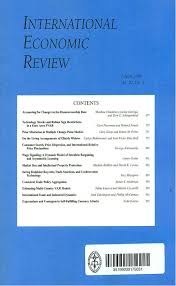
Bartelsman, E., Gautier, P. and de Wind, J. (2016). Employment protection, technology choice, and worker allocation International Economic Review, 57(3):787--826.
-
Affiliated authors
-
Publication year2016
-
JournalInternational Economic Review
We show empirically that high-risk sectors, which contribute strongly to aggregate productivity growth, are relatively small and have relatively low productivity growth in countries with strict employment protection legislation (EPL). To understand these findings, we develop a two-sector matching model where firms endogenously choose between a safe technology and a risky technology. For firms that have chosen the risky technology, EPL raises the costs of shedding workers in case they receive a low productivity draw. According to our calibrated model, high-EPL countries benefit less from the arrival of new risky technologies than low-EPL countries. Parameters estimated through reduced-form regressions of employment and productivity on exit costs, riskiness, and in particular their interaction are qualitatively similar for actual cross-country data and simulated model data. Our model is consistent with the slowdown in productivity in the European Union relative to the United States since the mid-1990s.